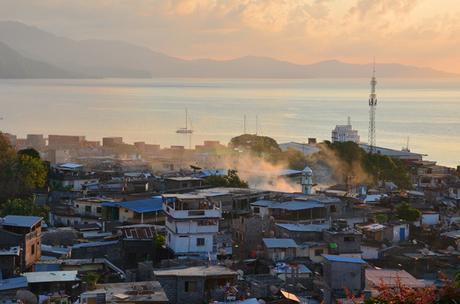
Comoros, an island nation tucked between Mozambique and Madagascar, is the landfall I have most anticipated among our planned Indian Ocean destinations.
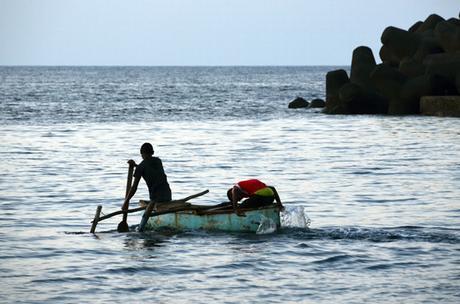
Comoros does not have published official fees or processes for private boats to visit; there is no tourism industry here. That’s what happens when more than twenty coups are attempted since independence from France in 1975. It’s been led by a series of military officers, a French mercenary, an Ayatollah, and the odd career politician. The first peaceful, democratic change of leadership took place less than ten years ago, and even after that, there was an invasion by African Union forces because the military leader on Anjouan (who had previously seized power, later rigged elections, and is believed responsible for the torture and disappearance of many) refused to step down. Thanks to the repeated involvement of foreign mercenaries, foreigners were treated with suspicion; there are more than a few stories online of unwitting visitors landing in jail (like this poor guy, or these South African surfers).
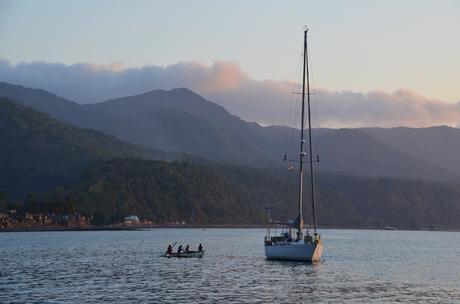
Totem anchored off Mutsamudu, Anjouan
You can see why boats might have been reluctant to visit. And it’s easy to go elsewhere, because the French island of Mayotte is a mere daysail away and Madagascar is only about 250 miles to the east. But last year, a family from New Zealand we had met in Malaysia sailed the extra miles from Mayotte to visit on their boat, Smoke. The stories they sent back planted a seed that quickly grew. We have a history of finding the places other people avoid to be particularly interesting – and what we heard from them about Comoros resonated.
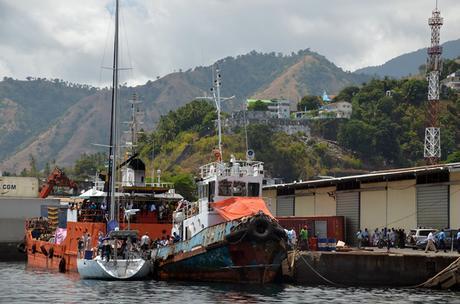
We arrived in Mutsamudu, Anjouan, mid-morning a few days ago and rafted to Utopia against the rusting tug in front of the Port Captain’s office. Meeting us on the dock is Maketse, the agent we’re told will guide us through formalities. In the succeeding days, he tirelessly advocates for us through a highly fluid process with various officials for clearance.
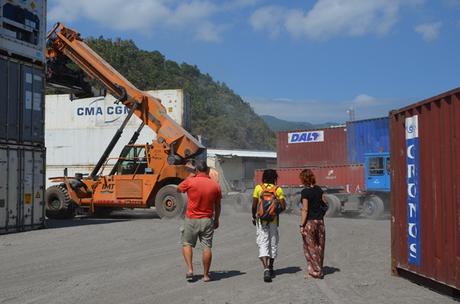
going ashore means walking through the active port, containers swinging and large equipment moving at speed
Maketse has a folder of ringing endorsements from the boats he’s helped over the years. Their timing tells a second story: dozens of letters and photos from mainly South African boats that flocked to Comoros in the 1990s are crammed inside. There weren’t “unofficial fees”, it was safe, and with Maketse’s help it was easy. But flip through, and the boats that have visited since the 2000 can be counted on fingers. At the very end is Bubbles- a boat we know from the Pacific that passed through in 2011.
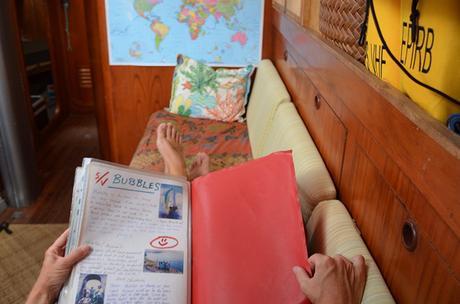
Every day, we make another step forward. Business hours end at 2pm (a practicality, because there’s no electricity from about noon to six) so it takes time. It’s not the first time we’ve faced questionable fees, but it’s the first time officials have come right out and asked: “how much do you think you should pay?”

Aline with Maketse at our meet-up spot, a ramp in the heart of the commercial port
Added to our crew (with many official documents created on board in Cosmoledo) is a French woman from Reunion; Aline has been with the sloop Shakespeare (and the force behind their very cool videos!) for months, but was keen to skip ahead to Anjouan with us as her boyfriend is flying in to meet her. Aside from being a lot of fun on board, she’s been a big help with clearance, as French is one of the official languages, and there’s very little English spoken.

at Immigration: technology is optional…patience is not
By day four, we’ve got visas in our passports, paid immigration, paid gendarme/police, and settled on fees with the port captain. With communication help from Maketse and Aline, we made a case with officials to clean things up and standardize fees for boats. I think it’s done (Noonsite will publish the details), but the boats to follow will confirm! Meanwhile- checking into Comoros is not cheap, but at least it can be predictable, but hopefully this has helped forge a repeatable process that is easier for boats in our wake.
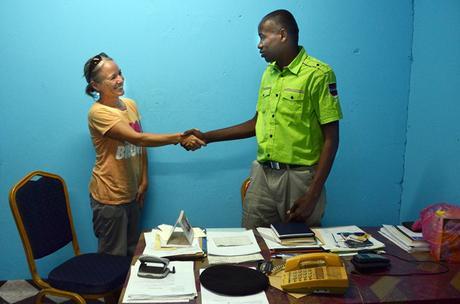
I’ve got the giggles.
With limited working ours, there’s a lot of time to explore. Every day, the more I see, the more grateful I am we came here – even if we can only stay a short time.
There are the sweet, juicy little berries in the best kind of packaging imaginable.
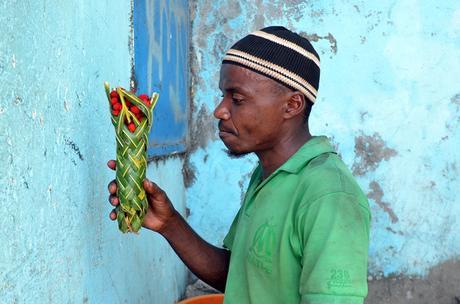
he scooped an extra handful of berries in there. about $1 for the bunch.
There are the kids who come by in the afternoon: they paddle dugouts, kayaks, or just float out on rice sacks filled with empty plastic bottles. I’m learning a few Comorian words from them.
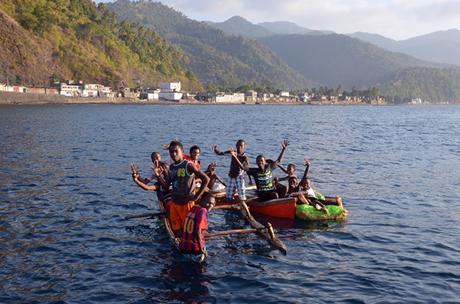
It’s late in the clove drying season; laid out on rooftops to dry, their sweet scent permeates the air. Families work together, streetside, picking green clove buds from branches.
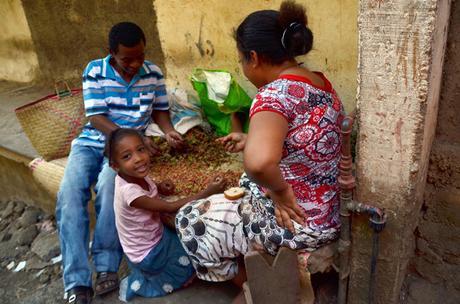
I brought a print of this back and gave it to the girl: oh, the SQUEALS of delight!
There’s the tangle of tiny lanes that make up the old medina which is the core of Mutsamudu, a maze of narrow alleys…cement canyons cracked by carved wooden doors.
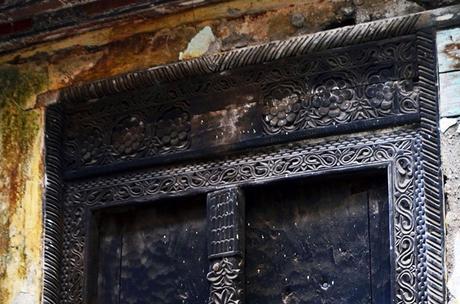
Gorgeous hand carved lintel- even the “flat” face of the door is hand-hewn
It’s a place where within hours of arrival, along with three other cruising women, I accidentally attended the women’s party for a wedding (celebrations being segregated in this Islamic society). Pulled in from the sidelines as passers-by, the women draped a scarf on our hips as entree to the dance.
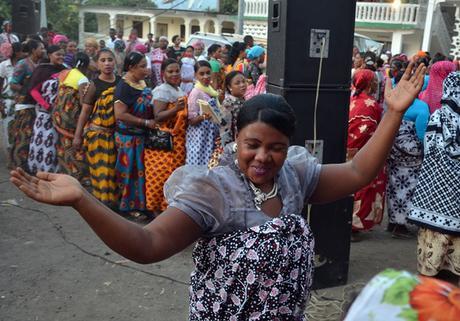
What next? Comoros is nothing but full of surprises.
This post is syndicated by Sailfeed: clicking through puts change in our cruising kitty. Thank you!

